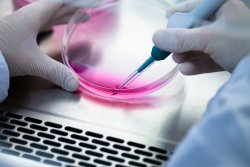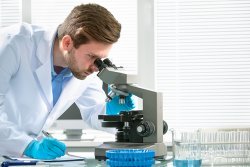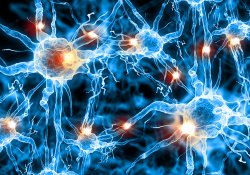Authors:
Matthias Stadtfeld, Hongyan Zhou
History:
 Obtaining of mammalian pluripotent stem cells from fibroblasts of adult animals became a real breakthrough in Cell Biology. Due to addition of transcription factors to fibroblasts, the cells of adult animals are able to transform into any cell of the organism. Such cells were called induced Pluripotent Stem Cells (iPSCs). In 2008 this experiment was first repeated in human cells.
Obtaining of mammalian pluripotent stem cells from fibroblasts of adult animals became a real breakthrough in Cell Biology. Due to addition of transcription factors to fibroblasts, the cells of adult animals are able to transform into any cell of the organism. Such cells were called induced Pluripotent Stem Cells (iPSCs). In 2008 this experiment was first repeated in human cells.

Example:
On September 12, 2014 in Japan the
Description:
Pluripotent Stem Cells are able to transform into any type of adult organism cells. Induced Pluripotent Stem Cells — are the cells, driven from somatic cells of adult organism.
 The obtaining technology of these cells is quite simple: in vitro the somatic cells are driven from a patient skin biopsy; then the cells are converted into iPSCs, and these «fresh» pluripotent cells are differentiated into the necessary cell type and, finally, they are transferred to the patient.
The obtaining technology of these cells is quite simple: in vitro the somatic cells are driven from a patient skin biopsy; then the cells are converted into iPSCs, and these «fresh» pluripotent cells are differentiated into the necessary cell type and, finally, they are transferred to the patient.
IPSCs are expected to give the opportunity to replace the sick or lost cells directly into the tissues, regenerating the body literally by cells. It will be suitable for the treatment of many diseases, such as Alzheimer’s, Parkinson’s, diabetes, and consequences of heart attack.
Furthermore, on the immortal iPSCs cultures it can be studied many rare genetic diseases, as well as developed and tested the methods to fight such diseases. iPSCs have already been obtained for the treatment of such diseases, as Amyotrophic Lateral Sclerosis (Lou Gehrig’s disease), Rett syndrome, Spinal Muscular Atrophy (SMA), insufficiency of Antitrypsin α1, Familial Hypercholesterolemia, as well as for treatment of various cardiac diseases.
Additions and Criticism:
 The downside of iPSCs application is a possibility of malignant transformation of this cells in the human organism. In addition, talking about brain diseases, there are a number of additional problems of iPSCs transplantation because of outstanding complexity of the human nervous system.
The downside of iPSCs application is a possibility of malignant transformation of this cells in the human organism. In addition, talking about brain diseases, there are a number of additional problems of iPSCs transplantation because of outstanding complexity of the human nervous system.
Despite potential concerns, nowadays, the iPS cells technology is one of the most promising methods for studying the molecular mechanisms of cellular abnormalities, as a part of personalized medicine; creation of the effective test systems for searching and screening of pharmaceutical preparations; and for the development of cell therapy approaches to treat various human diseases.
Publications:
- Zhao, Tongbiao, et al. «Immunogenicity of induced pluripotent stem cells." Nature474.7350 (2011): 212–215.
- Han, Dong Wook, et al. «Direct reprogramming of fibroblasts into neural stem cells by defined factors." Cell stem cell 10.4 (2012): 465–472.
- Robinton, Daisy A., and George Q. Daley. «The promise of induced pluripotent stem cells in research and therapy." Nature 481.7381 (2012): 295–305.